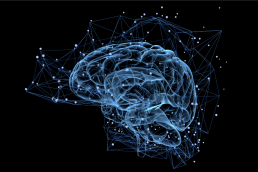Cell & Systems Biology was glad to support the 5th Annual Meeting of The International Society for Neurodegenerative Diseases on December 18th and 19th, 2020. The virtual conference hosted recognized experts in the field of neurodegenerative diseases, and covered topics ranging from biochemical pathogenesis to advances in neurobiological engineering.
Dr. Valina Dawson (Johns Hopkins University) revealed findings emphasizing the potential therapeutic benefits of PARP-1 inhibitors in Parkinson’s disease. Dr. Dawson showed that pathologic α-synuclein activates PARP-1, a key enzyme involved in DNA repair pathways. PARP-1 activation promotes increased PAR generation, a polymer known to contribute parthanatos, a form of programmed cell death. PAR also enhances the formation and toxicity of pathologic α -synuclein, amplifying the neurodegenerative effects of α -synuclein in a feed-forward loop.
Dr. Michael Heneka (University of Bonn) detailed a feed-forward pyroptotic mechanism in Alzheimer’s disease (AD). One of the pathogenic pathways associated with AD involves neuroinflammation through the activation of microglia by β-amyloid (Aβ) deposits. In AD pathology, Aβ is known to bind to ASC specks, aggregates of the inflammasome adaptor protein ASC. Through co-immunoprecipitation and cell viability assays, Dr. Heneka revealed that microglia exposed to ASC-Aβ composites undergo pyroptotic cell death, leading to the release of functional ASC, which then activates surrounding microglia.
Deviating from Dr. Heneka’s innate immunity hypothesis, Dr. Li-Hui Tsai (MIT) discussed her research on the neurovascular hypothesis of AD. Dr. Tsai’s group reconstructed the blood-brain barrier (BBB) using an induced pluripotent stem cell (iPS) strategy to uncover the mechanisms underlying susceptibility of the neurovasculature in AD. Different permutations of this induced BBB incubated with fluorescently conjugated Aβ uncovered that pericytes are necessary for increased vascular Aβ accumulation.
An iPS strategy was also used by Dr. Laura Ferraiuolo (University of Sheffield) to generate neuronal progenitor cells (NPCs) from human skin fibroblasts of living ALS patients. Dr. Ferraiuolo demonstrated that these induced NPCs differentiate into astrocytes (i-astrocytes) that retain the age-dependent transcriptional profile of the donor. In an assay of i-astrocytes from patients with different genetic ALS backgrounds grown on healthy motor neurons (MNs), Dr. Ferraiuolo observed increased MN death, substantiating an important role of astrocytes in ALS pathogenesis.
As evidenced in the earlier talks, neurodegenerative diseases (NDs) are complex illnesses involving several pathogenic pathways. Indeed, Dr. Chiadi Onyike (Johns Hopkins University) underscored the difficulty in defining fronto-temporal dementia (FTD) prognosis given the heterogeneity in FTD pathogenesis and symptoms. Dr. Onyike presented research evaluating the longitudinal sensitivity of psychometric tests as they relate to quantifying cognitive decline in FTD. His data show that most established behavioural tests show little temporal correlation with disease prognosis of slow progression behavioural variant FTD (bvFTD). These findings are pertinent to selecting measures and interpreting clinical results in FTD studies, suggesting that existing tools need to be critically evaluated.
Looking forward, new research tools are continually being developed. One such tool was presented by Dr. Edward Boyden (MIT), who explained his recently developed tool for mapping molecules and connections within the brain. This tool, called expansion microscopy (ExM), involves swelling the specimen by binding target biomolecules to swellable polymers. Specimen swelling allows for better access to proteins and higher resolution visualization of brain connectivity. This nanoscale brain mapping has implications in ND research; ExM has been used to reveal co-localization of Aβ nanoclusters with ion channels in mouse models of AD.
The engagement of the audience was evident from the quality of questions, which helped the presenters highlight salient features of their research. The questions revealed additional dimensions of current research, and provided hints of possible new research questions in the field of neurodegeneration.
We look forward to the 6th Annual ISND Meeting!

